#tam transportes aéreos
Explore tagged Tumblr posts
Text
No. 29 - What is the Flag Carrier of Brazil?
In part two of what is at this point going to be a three-part post, let's look at some history, which happens to include a bunch of liveries, on a quest to answer the question...well, it's the title.
We've talked a lot about flag carriers on this blog. I believe, quite emphatically, that flag carriers should have particular considerations when designing liveries, which I've discussed in my Icelandair post. After all, these are a point of national pride, at least in theory. This is one of the reasons most countries have them, and I've mentioned the US as a rare exception. The United States have never had an official flag carrier, and this persists to this day.
But what is the flag carrier of Brazil?
I asked this question on my recent questionnaire. I got a lot of answers. This one was my favorite.

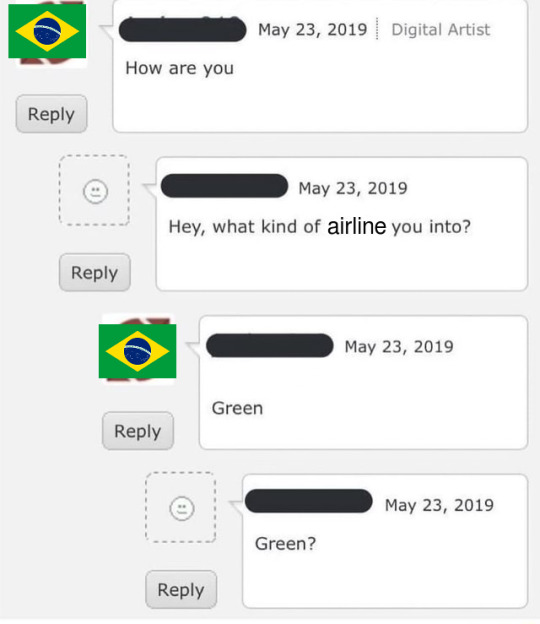
But aside from that, the answers I got were all over the place, and only one of them was correct (while a handful of people did know the correct answer for Switzerland). In fact, the majority weren't real airlines, and none were airlines that currently exist. In order, the most common responses were:
An explicit admission of not knowing
Some variant of "Brazil Air" or "Brazilian Airlines" (not real, has never been real, at least not as anything except a lengthened official name to an airline which goes by something else, i.e. Azul)
Things that are just totally silly, like Green
Airlines that were real, but no longer operate, specifically one guess of TAM and one of VARIG, the latter of which was acknowledged by the submitter as being defunct
Embraer, which as far as I can tell does sort of fit the same spot for Brazil as Boeing does for the US
Rainforest Airlines (not real)
"Something Portuguese", which was a fair bet and I wish was true (you would have been right if you'd gone for the reliable Latin American answer 'an abbreviation', though)
The correct answer, from an actual Brazilian: is this a trick question?
Yeah, Brazil...doesn't really have a flag carrier, not in a way that matters. But 'what is the flag carrier of Brazil' has been an interesting question for a while now. So it doesn't have a flag carrier - what does it have? To answer that question, I first have to answer another one. It hasn't always been this way. So...where did Brazil's flag carrier go?

Founded just a month after Pan Am and slightly before Iberia, VARIG (Viação Aérea Rio-Grandense, Rio Grande Airlines) was Brazil's first airline, its largest, and its main bridge to the rest of the world. In short, its flag carrier.

Well, technically, VASP existed too. I feel like people forget about VASP. Viação Aérea São Paulo (São Paulo Airlines), known better as VASP, was founded in 1933 by the state of São Paulo.
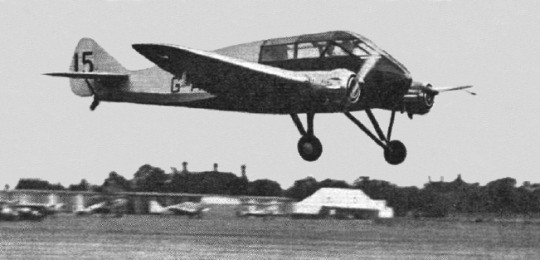
They flew this awesome-looking plane, the General Aircraft Monospar.
Since São Paulo is nowhere near the ocean, they used only landplanes, which was pretty unusual for the time. Early on this meant they were using dirt airstrips and 'airstrips', presumably just some grass that had airplanes landed on it until it got all smushed down. Eventually an airport was built to accommodate them, though.
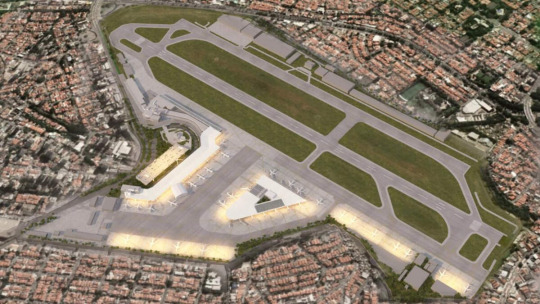
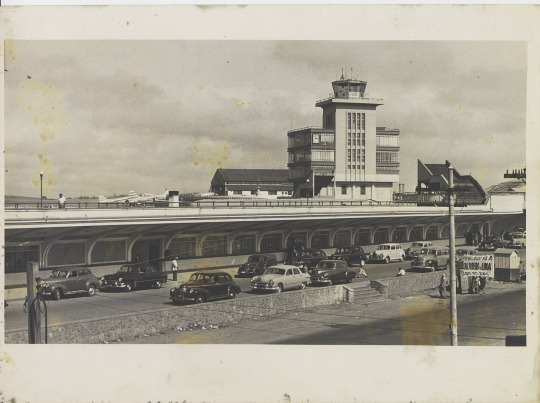
São Paulo–Congonhas Airport (CGH/SBSP) is Brazil's second-busiest airport. It is known for its gorgeous terminal building and being one of the most dangerous airports in the world due to crowding and runways which become unnervingly slippery with even the slightest rain, which contributed directly to it being the site of Brazil's deadliest air disaster. It now has a very low cap on operations and no longer serves international destinations, but that might be VASP's single biggest contribution to history - an airport that caused a mass casualty event after VASP had already stopped flying. In its defense, landing at Congonhas was still probably nominally safer than putting a 737 down in an empty field, and tore up the landing gear less.
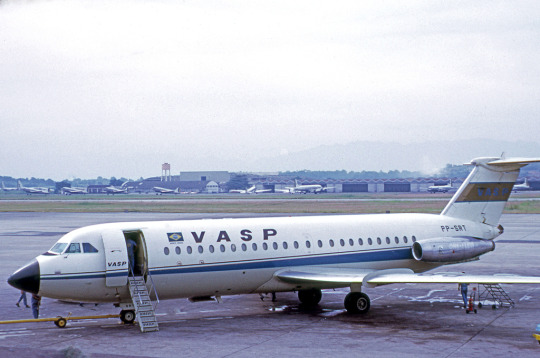
VASP was pretty dominant domestically for most of its history (while VARIG was essentially the only international airline), until it entered an incredible death spiral. The decline began in the 80s, in a way I would not describe as an incredible death spiral. That portion was initiated when VASP was privatized, attempted to expand into international destinations, gave up on that within a decade, stopped flying altogether and existed only to provide maintenance for other airlines, and then went bankrupt in 2008.
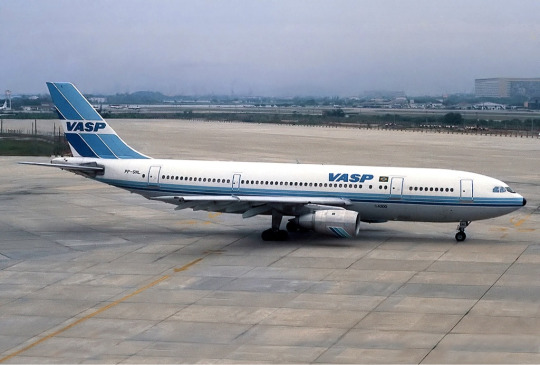
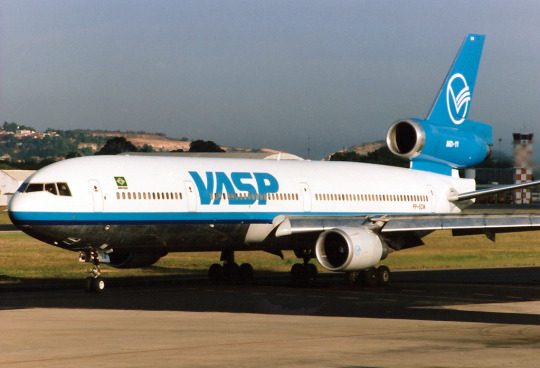
I prefer its livery to VARIG's, I think. I like that they didn't promptly shift the wordmark all the way forward like a lot of airlines did, and I like their shade of blue, but I sort of miss the old blue stripes. I mean, jetBlue could try that on for a tail? Still, always quite simple. It has one or two things I'd call 'features' in every iteration, but it never goes above a C- for me.
So, yeah. I would feel like I was omitting something if I didn't at least mention it, given it was a nationalized carrier and a huge chunk of Brazilian aviation history. I just feel like everyone forgot VASP the moment they went out of business, and that almost makes me sad.
Oh, well! There's other airlines.
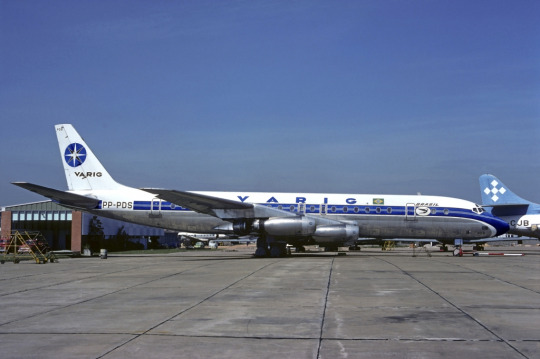
Like VARIG! I feel like VARIG's older tramline blue livery was somehow pretty iconic despite being deeply, deeply generic. It does the layered, multicolor cheatline thing Lufthansa did but with blue-on-blue, which I actually quite like, and indeed this does feel a bit like a monocolor Lufthansa of the time period. I'm unsure if I actually think it's iconic because I'd be able to pick its old livery out of an identity parade or just because it was massive, but I'm going to just give it a C, I think, which would probably be higher if I were alive in the time period, but I don't believe I was. Let me know if you know anything I don't on the subject.

Their modern livery (designed in 1996 by the prolific Landor Associates) was also pretty alright. I like that weird little inexplicable divot, feels like it keeps me on my toes - not an airline I can rely on straight lines with! Nice legible wordmark, gold contrasting symbol (though I think they could have done something on the main body with it), it's all nice, it's all cromulent, C airline. This was designed at a point where full white fuselage wasn't done to death the way it is now, or I'd be harsher, but it feels a bit like beating up a corpse, given the rest of this post.
VARIG was Brazil's only real international airline for literal decades. It existed until 2005, other airlines gradually cropping up to chip away at its monopoly, until it finally went under and was restructured into two companies. One, the judicial successor known colloquially as "old VARIG", became the quickly-defunct FLEX Linhas Aéreas, which lasted all of another five years; the brand, meanwhile, was given to "new VARIG", which was purchased by GOL Linhas Aéreas Inteligentes.

GOL haven't been using the VARIG brand, which I generally think is the better move when it comes to acquiring old trademarks; better to build something new than attempt to resurrect something dead. Besides, they have their own brand, using the unusual color scheme of grey and orange and with a very memorable and simple logo (though it does look a bit like it says GOOL).
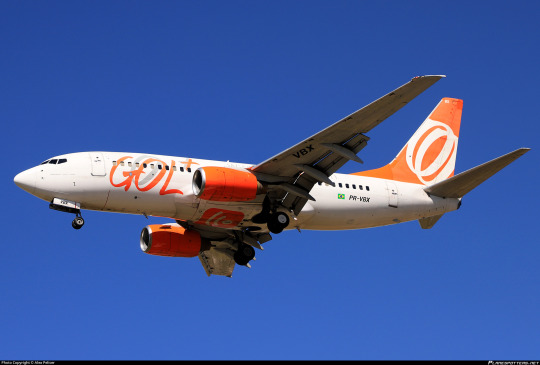
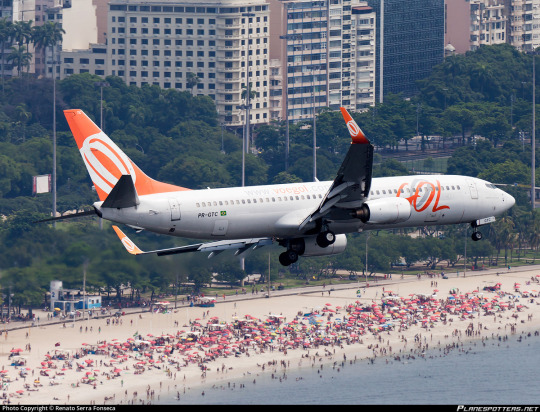
Judging by the reactions of a couple Brazilians I know in person who I told about this airline, the name is a love letter to Brazilian culture. Flag carrier material? Well, let's pause. How do they look? Are these planes a country can be proud of?
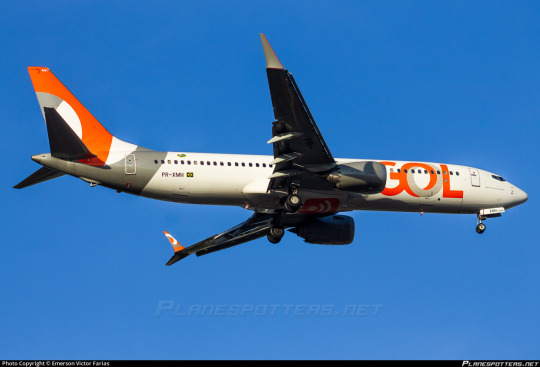
I like the loops a lot. While I prefer the scribbly feeling of the old GOL wordmark (the first two planes pictured) I think the new livery (immediately above) is an improvement in every other way, namely a somewhat clever solution to the Detached Tail Syndrome problem. I like how the wordmark is centered on the fuselage, and the fact that there are loop details on the winglets as well.
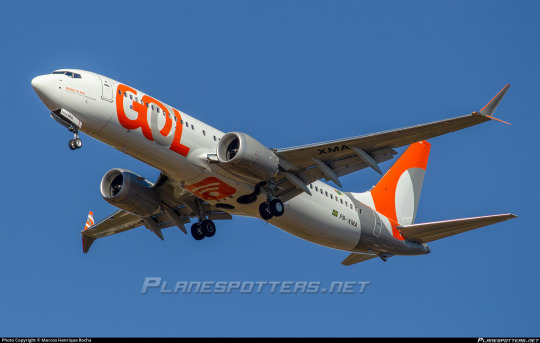
And, honestly, people underrate how hard it is to make a design like this look good consistently from different angles, but I think this does. I like it.
Do I wish there was more orange and grey and less white? Yes, but do I think it uses what little color it is very well and is more than the sum of its parts? Also yes. This could definitely improve a lot but it's very well thought out - just think even more outside the box and you'll get there.
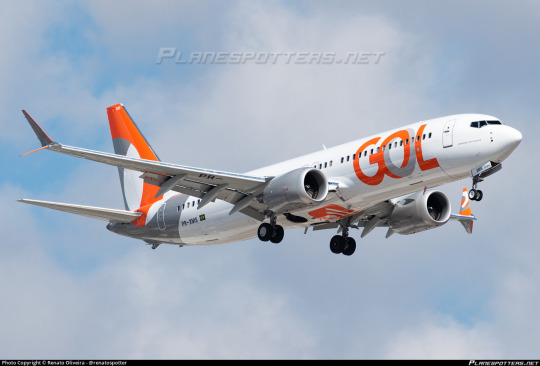
B-. I like this, even though orange is my least favorite color and doesn't feel like it should go with grey at all. Good job, GOL.
Even though new VARIG wasn't the same company, surely it was part of VARIG, so this would make GOL its successor? That does make sense, hypothetically, but isn't how it shook out. For one, GOL is a low-cost carrier, which flag carriers usually aren't, particularly because LCCs tend to fly shorter point-to-point routes. (In 2019 GOL was Brazil's largest domestic airline with nearly 40% of the market share, and its third largest international airline, with nearly...four percent.)
The second, and I think potentially more damaging event, one which kept it in this mostly-domestic state, was a codeshare agreement with Portuguese flag carrier TAP Air Portugal falling through. TAP is a major international airline which flies basically everywhere within A330 range of Lisbon and which I constantly see as a codeshare option on flights to places that are definitely not actually in Portugal. GOL is the sort of airline I'd call...nominally international, in that it does fly to other countries, but those countries aren't particularly distant. They fly to other destinations in South America, a few in the Caribbean, and also Florida. It would be tricky to manage anything else given their all-737 fleet; they seem to have owned and operated 767s for just long enough to realize that this 'being a flag carrier' thing wasn't going to work out for them. TAP? They fly to South Africa, Venezuela, Norway, Guinea, Macau, Montreal - basically everywhere, including eleven destinations in Brazil. GOL flies to 17 countries in total. This was followed up with a failed attempt to join oneworld which also fell through for some reason or another, after which GOL said 'well, that's fine, we didn't want to be part of an alliance anyway' and then just went back to minding their own business domestically and making heaps of money, while the last vestiges of even new VARIG became thoroughly extinct to the point that I didn't know GOL technically had the trademark until maybe a month ago.
TAP did codeshare with a Brazilian carrier, though, one of the other three largest in the country.

If you feel something ominous building up, sense a certain presence...
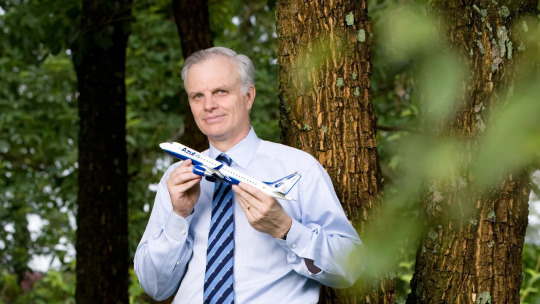
No. Stop smirking, David. You won't be involved in TAP until 2015. At this point in the David Neeleman timeline he was still at jetBlue. Wait, does this make TAP jetBlue's step-sister?

To be totally honest I think by force of branding alone Azul Linhas Aéreas Brasileiras should get to be the flag carrier because clearly they want it and nobody else does, but they have the same issues GOL does and given David seems to have moved on I can't imagine that changing anytime soon. B+ for the Brazilian flag livery, by the way, that looks awesome.
No, this post is not going to become about David Neeleman, it's going to become about TAM Linhas Aéreas.

TAM originally stood for Táxi Aéreo Marília. The airline was later named TAM – Transportes Aéreos Regionais, and operated a subsidiary called Brasil Central Airlines. When restrictions on destinations for domestic carriers were lifted in the 90s this subsidiary rebranded to Transportes Aéreos Meridionais. You may notice that this means there are two TAMs, owned by the same holding company (only distinguishable by their differing IATA codes, KK and JJ - they even had the same livery).
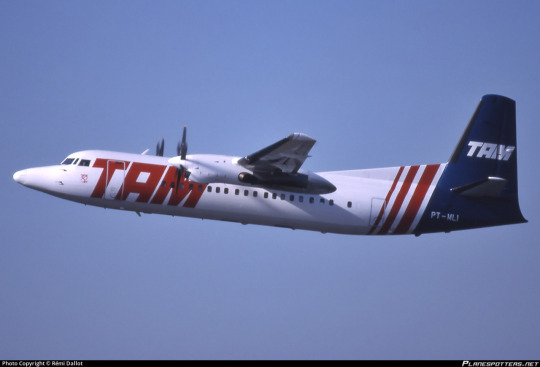
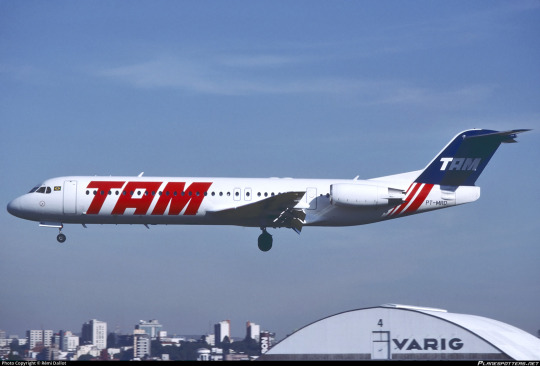
They solved this issue by just becoming one carrier, TAM Transportes Aéreos (with the code JJ). They tried to buy VASP, didn't manage to buy VASP, and then sort of became the flag carrier anyway.

I hate TAM's livery because I like it but also hate it. They did the Lufthansa straight-tail back when that was a major innovation over Detached Tail Syndrome, I like the way the trim on the tail goes all the way over the top of the rudder and widens as it slopes down, I like the little bird on their wordmark a lot, and I love the red and white with just a hint of blue. This color scheme is just fantastic. My only criticism is that they stopped and forgot to do anything with the rest of the plane.
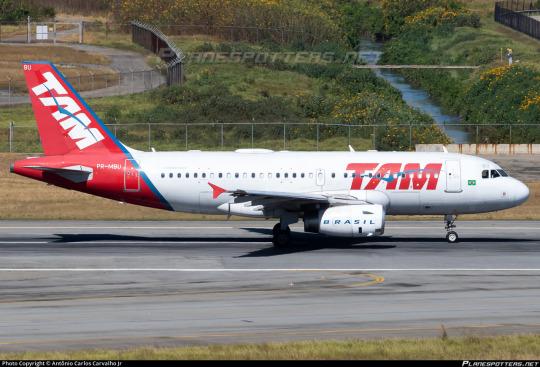
I mean, like, it looks okay, right? This looks fine?
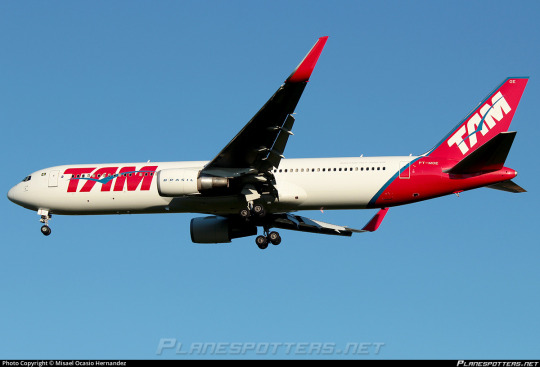
Hmm, okay, flattering angle, still looks decent-
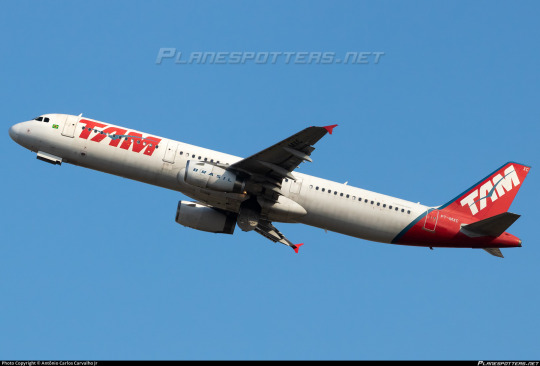
NO NO NO PUT IT BACK WHITE TUBE WHITE TUBE WHITE TUBE-
This livery looks so phenomenally back-heavy despite the huge wordmark. This is an A321. This isn't even a long-looking plane by any stretch of the imagination. I'm going to say it outright: this is why you paint your engine cowlings.
C, but the concept is good!
There's a lot to work with if you just commit to the bit! Given the timeline we're working with, TAM would actually probably be overhauling their livery sometime around now...you know, if they still existed.
TAM got the codeshare deal with TAP. TAM joined Star Alliance. After VARIG went under and GOL dropped the bag TAM became Brazil's de facto flag carrier. They were full-service, flew to Europe and North America, and they had the Brazilian flag on their planes, which were registered in Brazil. They became the largest airline in Brazil. Then the largest in Latin America.
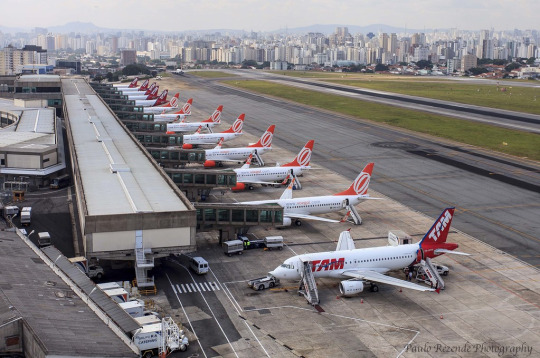
Average state of Congonhas pre-2015, assumedly back when it was still allowed to land international flights.
They were also rated runner-up for least safe airline in the world by the Jet Airliner Crash Data Evaluation Centre in 2013.
...what a note to go out on, huh?
For a few years now, something has been building, far from the prying eyes of those watching the liveries of the planes taxiing by them. Soon the parasite inside TAM will burst out, and the largest country in South America will no longer have an airline of its own.
Something very big is about to happen. Something which casts a shadow over all of Latin American civil aviation.

#tarmac fashion week#grade: c#grade: b-#latin america#region: brazil#varig#vasp#gol linhas aéreas inteligentes#tam transportes aéreos#azul linhas aéreas#double sunrise#flag carriers#low cost carriers#questionnaire 1#neelemanverse#special liveries#what is the flag carrier of brazil?
28 notes
·
View notes
Text
Events 10.31 (after 1950)
1956 – Suez Crisis: The United Kingdom and France begin bombing Egypt to force the reopening of the Suez Canal. 1956 – Hungarian Revolution of 1956: A Revolutionary Headquarters is established in Hungary. Following Imre Nagy's announcement of October 30, banned non-Communist political parties are reformed, and the MDP is replaced by the MSZMP. József Mindszenty is released from prison. The Soviet Politburo makes the decision to crush the Revolution. 1961 – In the Soviet Union, Joseph Stalin's body is removed from Lenin's Mausoleum, also known as the Lenin Tomb. 1963 – Indiana State Fairgrounds Coliseum gas explosion: A gas explosion at the Indiana State Fairgrounds Coliseum in Indianapolis kills 81 people and injures another 400 during an ice show. 1968 – Vietnam War October surprise: Citing progress with the Paris peace talks, US President Lyndon B. Johnson announces to the nation that he has ordered a complete cessation of "all air, naval, and artillery bombardment of North Vietnam" effective November 1. 1973 – Mountjoy Prison helicopter escape. Three Provisional Irish Republican Army members escape from Mountjoy Prison, Dublin aboard a hijacked helicopter that landed in the exercise yard. 1979 – Western Airlines Flight 2605 crashes on landing in Mexico City, killing 73 people. 1984 – Indian Prime Minister Indira Gandhi is assassinated by two Sikh security guards. Riots break out in New Delhi and other cities and around 3,000 Sikhs are killed. 1994 – American Eagle Flight 4184 crashes near Roselawn, Indiana killing all 68 people on board. 1996 – TAM Transportes Aéreos Regionais Flight 402 crashes in São Paulo, Brazil, killing 99 people. 1998 – Iraq disarmament crisis begins: Iraq announces it would no longer cooperate with United Nations weapons inspectors. 1999 – Yachtsman Jesse Martin returns to Melbourne after 11 months of circumnavigating the world, solo, non-stop and unassisted. 1999 – EgyptAir Flight 990 crashes into the Atlantic Ocean near Nantucket, killing all 217 people on board. 2000 – Soyuz TM-31 launches, carrying the first resident crew to the International Space Station. The ISS has been crewed continuously since then. 2000 – Singapore Airlines Flight 006 crashes on takeoff from Taipei, killing 83. 2002 – A federal grand jury in Houston, Texas indicts former Enron chief financial officer Andrew Fastow on 78 counts of wire fraud, money laundering, conspiracy and obstruction of justice related to the collapse of his ex-employer. 2003 – Mahathir Mohamad resigns as Prime Minister of Malaysia and is replaced by Deputy Prime Minister Abdullah Ahmad Badawi, marking an end to Mahathir's 22 years in power. 2011 – The global population of humans reaches seven billion. This day is now recognized by the United Nations as the Day of Seven Billion. 2014 – During a test flight, the VSS Enterprise, a Virgin Galactic experimental spaceflight test vehicle, suffers a catastrophic in-flight breakup and crashes in the Mojave Desert, California. 2015 – Metrojet Flight 9268 is bombed over the northern Sinai Peninsula, killing all 224 people on board. 2017 – A truck drives into a crowd in Lower Manhattan, New York City, killing eight people. 2020 – Berlin Brandenburg Airport opens its doors after nearly 10 years of delays due to construction issues and project corruption.
0 notes
Text
Nuevo Laredo activa módulos turísticos binacionales en estadios de Tecos

NUEVO LAREDO, TAM.- El Gobierno de Nuevo Laredo activará, a partir del viernes 28 de junio, dos módulos de promoción turística en Laredo, Texas, y en Nuevo Laredo, los cuales estarán ubicados en los estadios de béisbol UNITRADE y el Parque "La Junta". El director de Turismo Municipal, Marco Rodríguez Leija, dijo que estos módulos permitirán fortalecer los lazos de hermandad y unir esfuerzos para promover el turismo deportivo y comunitario a partir de un equipo único en su género a nivel mundial, además de abrir ventanas que permitan difundir el potencial recreativo y de servicios que tiene Nuevo Laredo. “Tenemos un equipo, único en el mundo que juega en dos países y además juega en la Liga Mexicana de beisbol; eso es importantísimo y tenemos que aprovechar ese potencial para detonar lo que se denomina como turismo deportivo”, mencionó el funcionario. Con esta finalidad, en el módulo de UNITRADE se sortearán incentivos para atraer turistas a Nuevo Laredo, entre los cuales se incluyen cupones de descuento en más de 50 restaurantes de la localidad, boletos para ingresar al Zoológico y al Acuario, así como la rifa de un viaje turístico. A través de productos audiovisuales y folletería se promoverán hoteles, restaurantes, agencias de viajes, servicios de transporte terrestre y aéreo y una amplia gama de prestadores de servicios turísticos para la recreación y la atención médica. También se fortalecerá la difusión del calendario con los partidos de béisbol programados del lado mexicano, así como la programación artística, los parques, las áreas recreativas, los espacios culturales y deportivos con los que cuenta Nuevo Laredo. En tanto que en el módulo del parque "La Junta", los aficionados al béisbol también tendrán la oportunidad de participar en el sorteo de un viaje turístico, obtener cupones de descuento en restaurantes, así como boletos para el Zoológico y el Acuario. Read the full article
0 notes
Text
3 notes
·
View notes
Text
LATAM abre processo seletivo com vagas de emprego imperdíveis para profissionais de vários estados
A Latam Airlines, companhia aérea chileno-brasileira, abriu seu processo seletivo e está disponibilizando diversas vagas de emprego em vários estados brasileiros. A empresa exige que os candidatos tenham completado o curso de formação de comissário de bordo e o ensino médio, a companhia disponibiliza cargos como, auxiliar de operações de cargas, agente aeroporto, mecânico de manutenção de aeronaves, entre outros. Vagas para pessoas com deficiência também estão disponíveis.
Processo seletivo da Latam
Confira algumas vagas de emprego disponíveis e os requisitos exigidos:
Auxiliar operações cargas — São Paulo, SP
Necessário ensino médio completo, desejável conhecimento em pacote Office e Google. Profissional responsável auxiliar na recepção de cargas, utilizando-se de equipamentos operacionais ou manualmente para cumprir os requisitos de carregamento e descarregamento, objetivando dispô-las no terminal de cargas e áreas alfandegárias, com qualidade e segurança, em todas as unidades de carga.
Analista canais administração RH Jr, PcD — São Paulo, SP
Necessário estar cursando ensino superior ou ter completado em áreas de RH e administração, desejável conhecimento do pacote Office, ferramentas Google. Responsável pela confecção de KPIs da área, análise de processos e de atendimento dos colaboradores e gestores.
Agente aeroporto — Joinville, SC
Necessário ensino médio completo, possuir interesse profissional em rotinas de atendimento ao público e disponibilidade para atuar com jornada de trabalho em regime de escala. Profissional responsável por executar atividades de contingências, efetuando reacomodação de clientes e provendo o cumprimento das legislações vigentes.
Mecânico de manutenção de aeronaves jr — Palmas, TO
Necessário ensino médio completo, curso técnico em manutenção e em manutenção de aeronaves, desejável dois anos de experiência na aviação. Profissional responsável por assumir e promover cultura segura no ambiente de trabalho, prestar rígida observância às normas e procedimentos de qualidade, segurança, saúde e meio ambiente da empresa.
Líder Almoxarifado — Guarulhos
O profissional deve ter formação superior completa nas áreas de administração, logística ou engenharia de produção, conhecimento com sistema SAP e Excel, experiência em operações logísticas, experiência em liderança e gestão de processos e pessoas. Responsável por acompanhar e desenvolver a equipe, garantir a organização e manutenção dos armazéns de estocagem através de sistemas corporativos e pela confecção de relatórios de controle.
Interessado nas vagas? Descubra como se inscrever no processo seletivo
Os candidatos interessados nas vagas de emprego podem conferir a lista completa de cargos disponíveis acessando o portal de oportunidade da empresa, no site estão descritos os requisitos, atribuições e local da vaga. Para finalizar a candidatura o profissional deve selecionar o cargo desejado e criar um login no site da Latam.
Benefícios e vantagens
A Latam oferece diversos benefícios para os colaboradores da empresa, além do salário compatível com o mercado os candidatos selecionados terão: vale-refeição, previdência privada, assistência médica e odontológica, auxílio academia, convênios com empresas parceiras, vale-transporte, descontos, e vale-alimentação.
Histórico da Latam
A Táxi Aéreo Marília foi fundada em 1961 por dez pilotos de monomotores, na época, transportavam cargas e passageiros no Paraná, São Paulo e Mato Grosso, após seis anos, o grupo foi comprado pelo empresário Orlando Ometto, e em 1971 o comandante Rolim Amaro, que já havia trabalhado na empresa quando esta foi fundada, foi convidado por Orlando Ometto para se tornar sócio minoritário da empresa.
No ano seguinte, o piloto adquire metade das ações e assume a direção da empresa, então o serviço voltou-se para o interior de São Paulo, Paraná e Mato Grosso. Após adquirir a empresa Lapsa (Líneas Aéreas Paraguaias) do governo paraguaio, ela passou a se chamar TAM Mercosur.
O post LATAM abre processo seletivo com vagas de emprego imperdíveis para profissionais de vários estados apareceu primeiro em Petrosolgas.
0 notes
Text
Latam y su futuro post pandemia

Latam Argentina con nuevos desafíos para hacer frente a la crisis del transporte aéreo post pandemia del covid -19. El mundo se vio paralizado después de darse a conocer el brote del covid-19 en China, y en poco tiempo a nivel planetario. Dicha parálisis arremetió contra el mercado aéreo, obligando a muchas líneas aéreas a queda en situación de quiebra. Las que aún siguen sobreviviendo, logran mantener a flote sus compañías mediante la disminución salvaje de sus gastos, frente a la imposibilidad de continuar con sus operaciones y no recibir financiamiento externo para mantener en pie toda su estructura. Es una estrategia desesperada, de corto plazo, que solo encuentra justificación en la gravedad de la situación que atraviesa esta industria. No así es el caso de LATAM, compañía que surgió de la fusión de la chilena LAN y la brasileña TAM. Su filial de cabotaje en argentina, que desarrolla vuelos comerciales y transporte de carga, ha reducido sus vuelos y operaciones en un 95% a causa del decreto instaurado por el Gobierno Nacional, en línea con muchos otros países del mundo, con fecha 19 de marzo del corriente año. Esta restricción a la circulación de personas, instaurado de forma repentina, tomó por sorpresa a muchos pasajeros que se encontraban fuera de sus lugares de residencia. Desde la empresa, a partir de esta situación se concentraron en calcular la cantidad de personas varadas, estimando una asombrosa suma de alrededor de 10.000 pasajeros, con el fin de solicitar una disposición para que puedan retornar a sus hogares y cumplir el aislamiento social, preventivo y obligatorio que dispuso el gobierno. Este era el modo más eficaz de hacerlo, ya que algunas provincias habían cerrado sus fronteras o limitado la circulación entre provincias, imposibilitando el retorno por la vía terrestre. La crisis golpea a toda la industria aeronáutica, pero no a todos los sectores por igual. Por mencionar un ejemplo, los fabricantes de aeronaves han logrado retomar las actividades en sus instalaciones. El transporte aéreo comercial se ha convertido en el más perjudicado por las restricciones mencionadas. El cierre de fronteras les impide operar, y los pocos vuelos permitidos con fines de repatriación, especiales o sanitarios, mayoritariamente quedan en manos de otro gran jugador del mercado. Por suerte, aun así, ha sido participe en las campañas de vuelos humanitarios. Gran diferencia con nuestros vecinos, eternos objetos de comparación por la fuerte presencia regional de los mismos. En Brasil y Chile están habilitados los vuelos de cabotaje, con restricciones en función de las necesidades y las demandas, pero no se vieron paralizadas sus operaciones logrando mantener a flote la continuidad de LATAM en dichos mercados. Igualmente, en los tres países han recortado el 50% de los salarios de sus empleados para lograr equilibrar las cuentas en los primeros meses de la pandemia y además a causa de la crisis que vive la aerolínea, la misma se vio obligada a despedir a unos 1.400 trabajadores entre las filiales de Chile, Colombia, Ecuador y Perú. El impacto también llegó al transporte de cargas, donde la empresa tiene una fuerte presencia debido a que LATAM CARGO es responsable de la exportación de animales y fármacos, e importación de maquinarias industriales, autopartes, fármacos y más, abasteciendo de productos al mercado local para palear la difícil situación económica. Reflotando esta actividad en el futuro cercano, podría dar sustento a todo el grupo, expandiendo nuevos desarrollos y aumentando su presencia, para sanear las cuentas de la empresa. LATAM Y SU CONVENIO CON DELTA La empresa americana delta que tiene el 20% de las acciones de Latam, debido a la fusión de ambas empresas para ser una de las empresas más fuertes de la industria aerocomercial y poder hacerles frente a otras empresas en los destinos internacionales, ambas buscan una solución en forma conjunta para atraer de nuevo la confianza al mundo aeronáutico a los pasajeros a causa del covid tomando las medidas pertinentes de prevención a bordo, las cuales se pueden mencionar a continuación: Precauciones a bordo: Embarque y desembarque: implementación de mejoras en los procesos de embarque y desembarque para evitar conglomeraciones. Asiento vacío: Siempre que sea posible dejaran libre el asiento del medio para promover la distancia entre pasajeros. Sistemas de ventilación: los aviones cuentan con un sistema de recirculación de aire del avión cada 3 minutos gracias a los filtros HEPAL(high eficiency particulate air), que remueven el 99,97%de las partículas. Higiene en cabina: definimos procedimientos de limpieza proactivos y periódicos en toda la cabina además disponibilidad de alcohol en gel en todos sus aviones. Protocolo de tripulación: Ajuste de protocolo de tripulación para minimizar las interacciones he incluir mascarillas para la tripulación y los pasajeros. Recomendaciones: solo las personas que viajen se acerquen al counter de check- in, entre 1 hora y treinta minutos y anticipación, check- in online, boarding pass digital, una vez dentro del avión permanecer en sus asientos y evitar desplazarse por la cabina. Todas estas medidas son tomadas con el fin de evitar que se produzcan contagios y poder mitigarlos de la mejor manera cuando el pasajero ingresa al aeropuerto para hacer el check –in y y en la espera para abordar, como así también una vez estando a bordo del avión durante la realización del vuelo, para que el pasajero se sienta seguro al momento de viajar a su destino elegido. Read the full article
0 notes
Text
Comandante Rolim e seu Fusca misterioso
Soube desse “Causo” em meados dos anos 90, quando fui fazer uma entrevista com o Comandante Rolim Adolfo Amaro, na época o todo poderoso da TAM.
Essa reportagem que fiz para a Revista Motor Show, focava no gosto que o aeronauta tinha por carros e motos. Comandante Rolim, como era carinhosamente tratado por todos, já comandava a TAM desde os anos 70, quando TAM significa Táxi Aéreo Marília.
A empresa cresceu graça a competência e a perseverança de Rolim, que entendia de aviação e das necessidades de transporte do consumidor, como ninguém.
Na entrevista marcada, o comandante Rolim me recebeu em seu escritório, na época em um dos hangares da TAM no aeroporto de Congonhas. Em um sábado a tarde, a conversa rolava descontraída e de maneira bem simpática: eu, Douglas Mendonça, e o comandante Rolim tínhamos em comum a paixão pelos carros e a dele ia adiante, também pelas motos.
Toda vez que um Fokker 100 da TAM ia levantar voo, ele ouvia o zunido das turbinas, reconhecia a aeronave, interrompia nossa conversa e logo dizia: “Ouve, outro vai levantar voo, vamos ouvir o som das turbinas que é música para os meus ouvidos!”

Coisa de gente apaixonada!
Ficava claro para mim que além dos carros e das motos, nosso querido comandante era apaixonadíssimo pelos aviões e por sua empresa aérea. E ele demostrava essa paixão na longa conversa que tivemos em toda a tarde de sábado.
Em um dado momento, saímos do escritório e o comandante me levou a uma sala do hangar, onde existiam cerca de 20 motocicletas. Uma mais linda do que a outra e só raridades. Me mostrou uma BMW, que me pareceu ser a sua preferida.
Contou que quando precisava pesquisar uma nova linha de aeronaves para a sua empresa, subia na moto BMW e viajava anonimamente, para descobrir no local qual era a infraestrutura da cidade e pesquisava para saber se a economia da região comportava uma linha aérea regular. Achei isso uma loucura! Mas era assim que o comandante agia.
Seu carro na época era um Mercedes S 500 blindada. Ele curtia o carro, mas o fato de ser presidente proprietário da TAM o incomodava.
“Sempre que olho pelo retrovisor, vejo o carro dos seguranças que não saem da minha cola e, na verdade, gostaria de circular pela cidade como uma pessoa comum!”, me disse o comandante Rolim.
Comandante Rolim e seu Fusca Itamar
Foi nesse ponto da conversa, que ele confidenciou algo: para poder transitar livremente no anonimato e se livrar até mesmo dos seguranças, o comandante Rolim comprou um Fusca Itamar 1994, novinho em folha na cor prata.
Confessou, naquele momento, ser apaixonado pelo Fusca, por sua história e conceito. Foi logo dizendo: “saio de casa de boné, óculos escuros no meu Fusquinha prata e ninguém percebe; nesse momento deixo de ser o comandante Rolim da TAM e passo a ser um cidadão normal e me sinto muito bem assim!”
Pronto! Estava descoberto o grande segredo do todo poderoso comandante Rolim da TAM. Ele se disfarçava de cidadão comum e, segundo contou, ia encontrar os amigos da mocidade na periferia de São Paulo.
Sem dúvidas, com aquele Mercedão blindado e aquele monte de seguranças correndo atrás, ele jamais conseguiria visitar os amigos queridos na periferia nem tão pouco conseguiria parecer um cidadão comum que a cidade de São Paulo esconde aos milhões.
Infelizmente para nós, o grande comandante Rolim veio a falecer em um acidente aeronáutico com um helicóptero em meados de 2001. Um grande homem empreendedor que o Brasil perdeu.
O post Comandante Rolim e seu Fusca misterioso apareceu primeiro em AutoPapo.
https://autopapo.com.br/noticia/comandante-rolim-fusca-misterioso/ encontrado originalmente em https://autopapo.com.br
0 notes
Text
No. 30 - LATAM Airlines
I wasn't entirely forthright last time. About the correct response to my questionnaire, I mean. I didn't lie. I just left out the second half.

Yes. It was a trick question. Brazil has four carriers that have, at one point or another, had solid claim to the title of flag carrier. And right now, the airline which represents them on the long-haul scale, their link to the world, their 'flag carrier'...is LATAM Airlines.

Why doesn't LATAM count? Well, because LATAM is...something quite unusual, a conglomeration of different features which appear in isolation but have yet to rear their head together, creating an admixture which I fear casts a shadow over much, if not all, of Latin America.
LATAM's story doesn't start in Brazil. It starts in Chile. But it doesn't stay there.
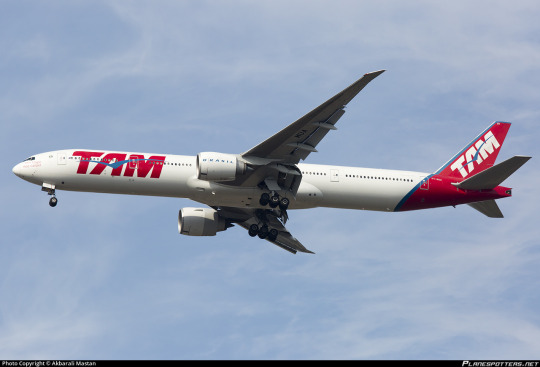
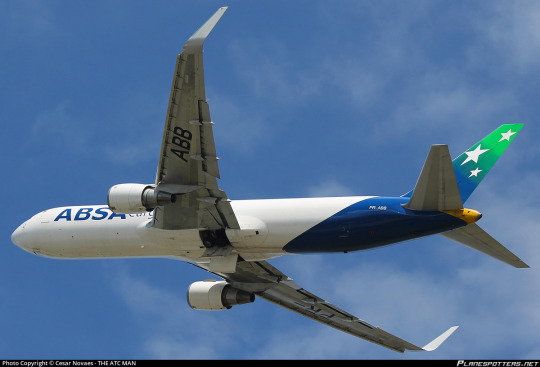

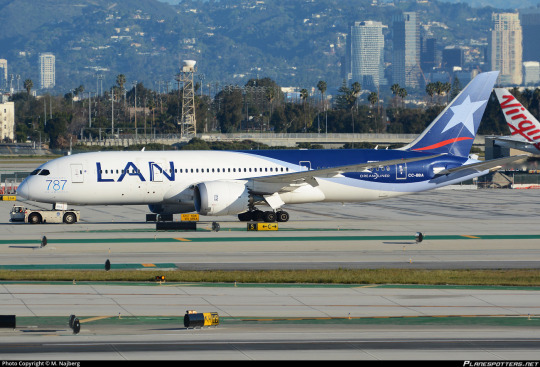
What do all these airlines have in common?
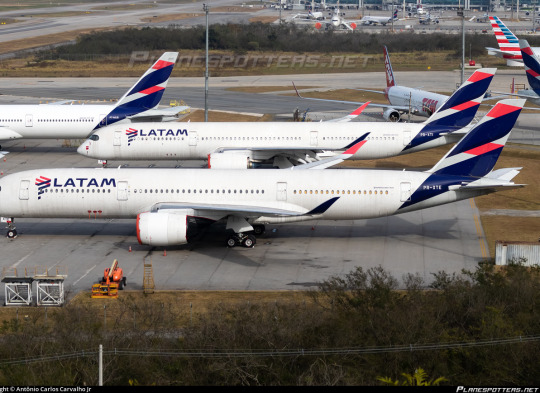
Their planes look like this now.
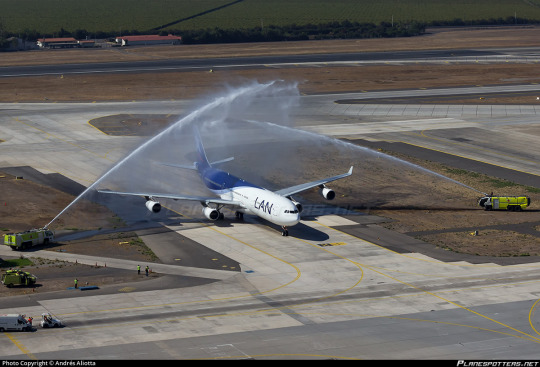
LAN-Chile was privatized in the 1990s. Until then, it had been the country's flag carrier. Now it was on the hunt to become something more. It was one thing to be the largest carrier in Chile, but there's more than just Chile out there. International carriers know this well, since they go outside of Chile.

Around the same time as LAN-Chile was privatized, LAN Perú was created as an independent company. It was a rough time for Peruvian aviation. Its flag carrier, Aeroperú, had just gone under, and its other major airline, Faucett, had lead the way for it two years earlier. They needed a new national airline, and LAN was there, identical in branding to the Chilean carrier of the same name. Unsurprisingly, it was officially made a subsidiary of LAN in 2002. Even the livery was changed.
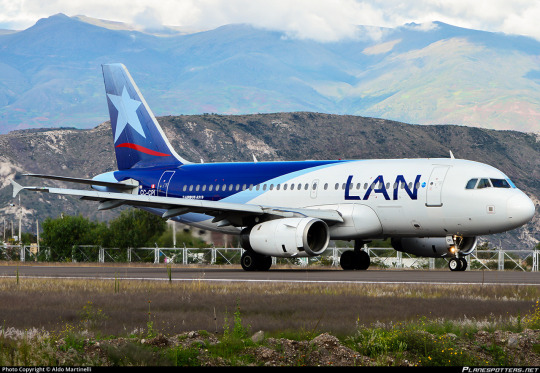
Over 70% of the market share was now held by what was essentially a Chilean airline, without even the name of the country it served written on its livery.
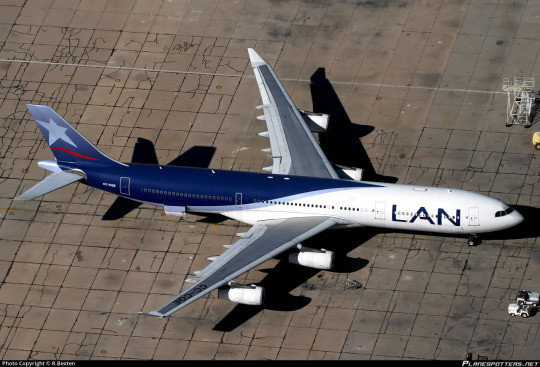
Also in 2002, LAN created another subsidiary - LAN Ecuador. It obviously looked the exact same as the other two LANs, so I have simply added another picture of a LAN Chile airplane. There is no reason I should care enough not to.
The LAN livery? Well, it's fine. I like the size of the wordmark and the way they committed to having half the fuselage covered, as should be the minimum, though other airlines do this exact shape far better; the layered light and dark blues are nice.
C. For Chile. Or maybe Peru. Or whatever else.
Another subsidiary was created, LAN Dominicana. Argentine airline Aero 2000 was acquired and became LAN Argentina. Both are now defunct.
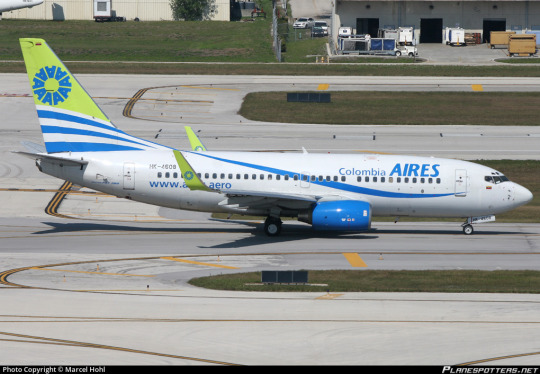
Colombia's second-largest airline, AIRES, also fell prey to the LAN infection which had now firmly planted its roots and its routes across the continent.
I actually more or less like the AIRES livery, which makes me sad. It's got a real sense of forward motion with those swooping lines and the high placement of the forward-leaning letters. It's...nothing special, but it's good enough.
It's at least worth a C+. I wish it still existed.
It could have been worse - Avianca, Colombia's flag carrier, held on, and is still in operation - one of the only challenges to LAN and what is now LATAM in South America. I'm sure they would have liked to have Avianca, and Panamanian flag carrier Copa, too, but even Copa draws the line here. But Copa and Avianca were small fry. There was only one carrier standing between them and utter domination - the largest airline in all of Latin America.
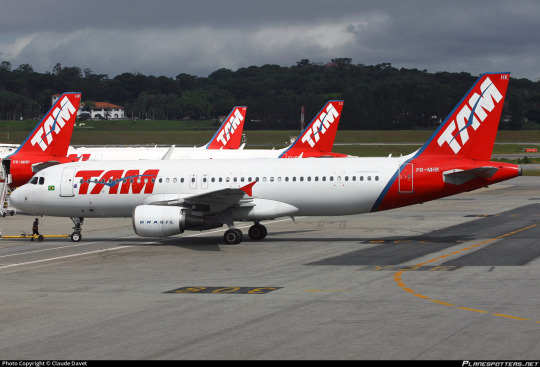
In 2011, TAM and LAN finalized a binding agreement to merge. The two companies fused into one, by far the largest holding company in Latin America, though much like the many LANs it continued to operate as separate companies. TAM still wore its own livery, but time was catching up to it.
TAM isn't a hero here. Well, nobody is, these are giant corporations that paint different things on their airlines, but my point is that TAM had done nearly the exact same thing.
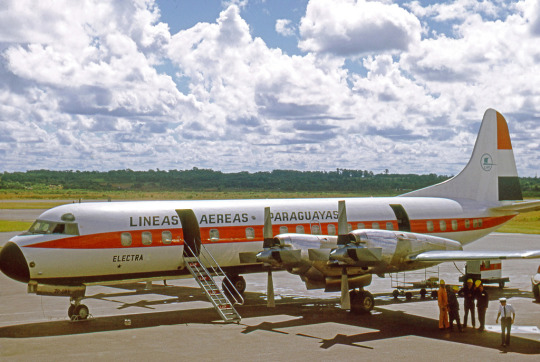
LAP (Líneas Aéreas Paraguayas) was the flag carrier of Paraguay, until it wasn't. In 1994 it was privatized and sold to an Ecuadorian-Paraguayan consortium which also owned now-defunct Ecuatorean airline SAETA. (Their livery was boring.)
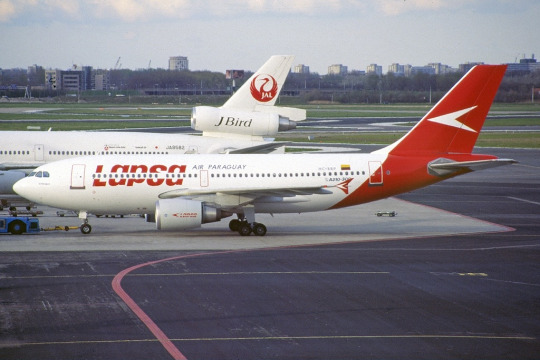
It began operations again as LAPSA Air Paraguay. Much the reverse of the LANs, this was SAETA operating under Paraguayan branding. But this only lasted until 1996, when TAM's Paraguayan subsidiary ARPA (Aerolíneas Paraguayas) acquired it and it was merged into TAM, with...you guessed it...the same livery. (Their livery was boring, though I always appreciate a nice bisected wordmark.)

This is TAM's livery from 2005 to 2008. What was now TAM Paraguay of course shared it.
This is the point where we stop and ask: why do I care? Doesn't this happen everywhere, all the time? Didn't like, thirty legacy carriers eventually merge into five in the US? Well, none of those were really a flag carrier, as much as certain brands like TWA were massive it just doesn't feel like it's quite the same. Not to mention that, unlike LATAM, which operates separate airlines in identical branding, when Delta absorbed Northwest or United swallowed Continental the entirety of their operations were merged into one company. It was what I'd call a 'true' operational merger rather than just occurring at the corporate level, like LATAM.
But aren't a lot of flag carriers owned by some combination of the same holding companies? The best-known example: doesn't Air France own KLM?
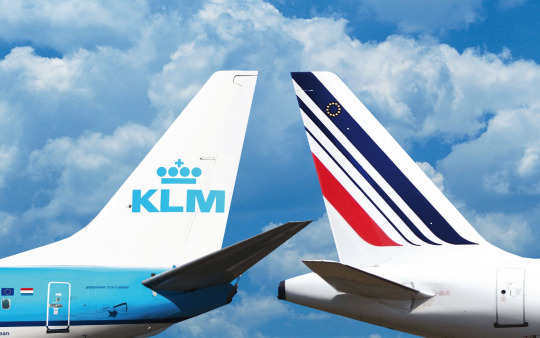
Well, sort of, yes. The merger between Air France and KLM is actually quite similar to the LAN-TAM merger in the sense that it's officially a merger but it's quite clear who's absorbing who. The merged company which became LATAM, despite taking a new name (combining LAN and TAM to make the admittedly clever LATAM) kept LAN's CEO, membership in oneworld rather than Star Alliance, and airport slots. It's 60% owned by Banco de Chile. It also keeps LAN's use of literally identical liveries for its branches instead of just mostly identical ones. All of the airlines which are part of LATAM are still operating as if nothing happened despite the fact that, in the sense of branding and identity, they just don't exist anymore.
But KLM obviously exists. In fact, KLM is an upcoming post! Because what LATAM is doing is pretty unusual!
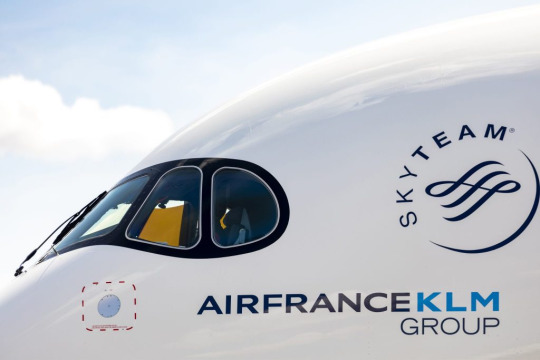
Lufthansa owns Brussels Airlines, Austrian Airlines, and whatever the flag carrier of Switzerland is. The same company owns British Airways and Iberia. None of those brands have been retired. Is it because it would cause massive backlash and thus lose money? I mean, probably, but that's never stopped companies from doing anything. I wouldn't be surprised if it were written into merger agreements in all honesty. When Davey Neeleman and his investie acquired custody of TAP it was on the condition they keep their base in Lisbon. I wouldn't be surprised if Lufthansa's contract included "let Belgium keep its flag carrier, even if it's owned by a German company".
It is almost aggressively normal for one massive conglomerate to own multiple seemingly unrelated brands. Everyone knows the thing about Mars owning every major candy at this point. But that isn't the same thing. That's like if every Mars-owned candy was branded as CANDY YOU CAN BUY IN AMERICA. Not even HERSHEY'S BAR YOU CAN BUY IN AMERICA. Just CANDY YOU CAN BUY IN AMERICA.
It's not TAM, a member of the LATAM Group. It's not LAN Perú. It's LATAM.
Perhaps the strange legacy of Brazilian flag carriers contributes to this fate. Perhaps those of other countries would be less willing to go along with it. You might think that. But the answer is far more gruesome: this is normalized in Latin America.
Avianca is an old, tenured airline with its own history. The Avianca Group is the second-largest airline holding group in Latin America and unfortunately does the exact same thing, being the death knell to flag carriers: El Salvador's TACA (which occupies a similar nominal-partner status as the former TAM), Costa Rica's LACSA, and Guatemala's Aviateca (which I would call a flag carrier by process of elimination, much like TAM), which had fallen to TACA before its absorption.
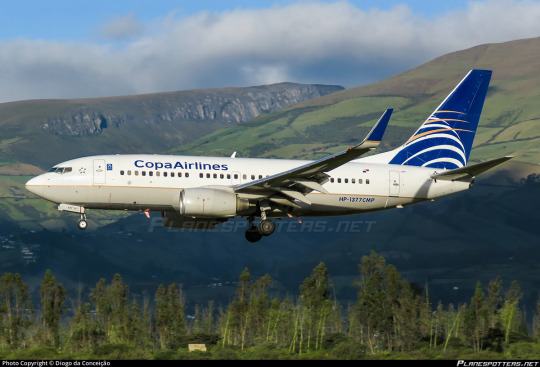
Believe it or not, Copa, which doesn't even have its own livery, is one of the largest bastions of brand identity freedom still clinging to life. Other competitively large flag carriers still operating in Latin America include Argentina's Aerolíneas Argentinas; Bolivia's Boliviana de Aviación; Cuba's Cubana de Aviación; and Mexico's Aeroméxico; though smaller flag carriers are scattered throughout it seems like basically the entirety of what could be called LATAM is now part of either LATAM or Avianca.
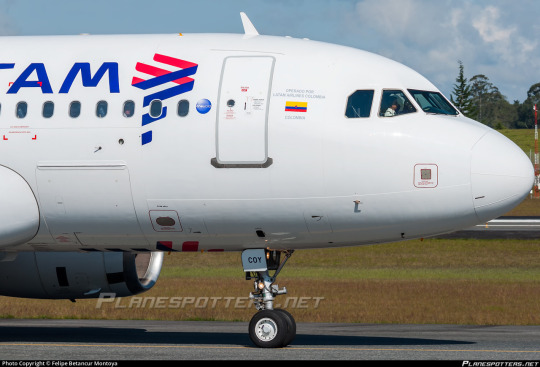
The only way to tell LATAM planes' airline of origin is by looking at the flag near the front and/or the registration, if you happen to know the registration codes for its member countries off the dome.
LATAM operates across six (formerly nine, including a cargo branch in Mexico) countries. It is the dominant airline in Chile, Ecuador, Paraguay, and Perú, and is the largest international airline in Brazil. Its branch in Colombia is outshone by Avianca, but that doesn't really matter, not to me. What matters is that five countries have no flag carrier, and isn't that weird and unnerving and sort of...bad?
This is a very baseless silly claim that means nothing, but it feels like LATAM (and Avianca, sort of) are trying to be the flag carrier of Latin America. And that's a terrible, worrying thing, given that this is an entire region of the world full of diverse countries which should have their own carrier, even if they're part of a larger international holding company. It's normal for airlines to purchase stakes or even majorities in other airlines when they're struggling financially, but it's almost the opposite of this. When Delta offered to buy a stake in JAL it felt like it was almost with the intent to preserve the JAL brand, and this is the norm. There's a reason we still have Brussels Airlines and Austrian Airlines and [whatever your guess on the questionnaire was] instead of Lufthansa Belgium, Lufthansa Austria, and Lufthansa Switzerland. Even Lufthansa gets to claim superiority over LATAM.
So when I discuss the Star Alliance Test, I am talking about something incredibly silly. It's already a little absurd when talking about carriers that are actually members of Star Alliance, and becomes moreso when talking about ones that aren't. But if I happen to discuss a carrier in Latin America, saying "I think it would be a mercy to their livery to be absorbed into LATAM" is possible. It's terrifying. The LATAM test is scarier than even the SmartLynx test by nature of what it represents.
...but is the livery bad, though?

Yes it is!
To be clear, philosophically speaking LATAM deserves an F. This livery should not exist because of what it does to other carriers. But I'll be rating it neutrally of that, much like the alliance liveries. This is the point of my blog.
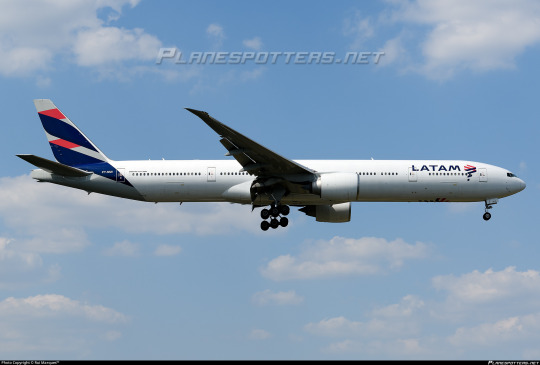
This was introduced in 2015, which really seems to be the turning point from detached tail to minimally-attached tail. Sure, it was one of the earliest adopters of this, but that doesn't make me respect the bare minimum much more. It has the same problem nearly every implementation of this does, where it looks totally adequate on shorter planes but hilariously bad on longer ones.
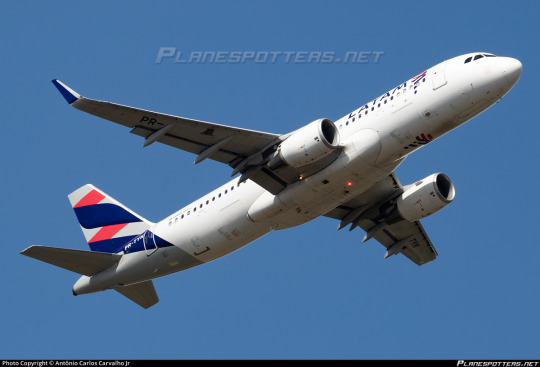
This livery in particular is begging for an extension because of this really pretty ribbon-wrapping effect. Why does everything just cut off abruptly at the same point? Why doesn't more of the grey bleed to the main fuselage? Why doesn't that nice blue ribbon keep going? Literally what is stopping you other than convention? Why is the entire underside white except for that tiny little logo, located weirdly high and small where nobody will ever see it?
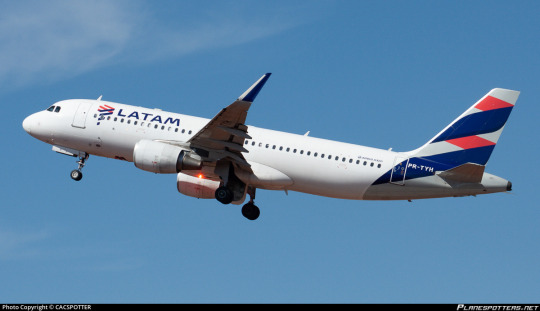
LATAM has this fantastic color scheme, a beautiful combination of fuchsia and midnight blue which looks stunning on the light cool grey they've chosen for the tail. And they blew it all on a tail-only livery with a mainly white body. They didn't even put it on the nacelles. I'm very exhausted.
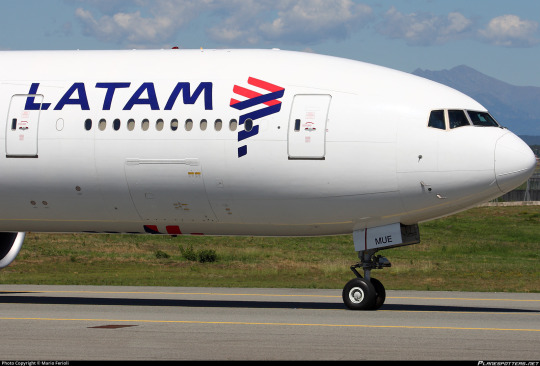
The entire livery is centered around this logo. It's approximately the shape of South America and admittedly very nice-looking. I like that the logo almost looks like a descender while the wordmark is above the windowline, but these sorts of little details are absolutely nothing when your plane is a big long white tube with a nice-looking tail transplanted on from a better livery.
LATAM's livery gets a D+.
And this is what we've lost so much to get. LAM, TAN, AIRES, SAETA...we are nearing a dark future where airports across Latin America are just lines of white planes, a thin line carved out by pretty tails cut off before their time.
#tarmac fashion week#grade: d+#grade: c#grade: c+#era: 2000s#era: 2010s#era: 2020s#latam airlines#lan airlines#aires#tam transportes aéreos#lapsa air paraguay#lineas aéreas paraguayas#region: latin america#region: brazil#region: colombia#region: chile#region: peru#region: paraguay#region: ecuador#copa airlines#long haul#compilations#lufthansa line
24 notes
·
View notes
Text
Events 10.31 (after 1950)
1956 – Suez Crisis: The United Kingdom and France begin bombing Egypt to force the reopening of the Suez Canal. 1956 – Hungarian Revolution of 1956: A Revolutionary Headquarters is established in Hungary. Following Imre Nagy's announcement of October 30, banned non-Communist political parties are reformed, and the MDP is replaced by the MSZMP. József Mindszenty is released from prison. The Soviet Politburo makes the decision to crush the Revolution. 1961 – In the Soviet Union, Joseph Stalin's body is removed from the Lenin's Mausoleum, also known as the Lenin Tomb. 1963 – Indiana State Fairgrounds Coliseum gas explosion: A gas explosion at the Indiana State Fairgrounds Coliseum in Indianapolis kills 81 people and injures another 400 during an ice show. 1968 – Vietnam War October surprise: Citing progress with the Paris peace talks, US President Lyndon B. Johnson announces to the nation that he has ordered a complete cessation of "all air, naval, and artillery bombardment of North Vietnam" effective November 1. 1973 – Mountjoy Prison helicopter escape. Three Provisional Irish Republican Army members escape from Mountjoy Prison, Dublin aboard a hijacked helicopter that landed in the exercise yard. 1979 – Western Airlines Flight 2605 crashes on landing in Mexico City, killing 73 people. 1984 – Indian Prime Minister Indira Gandhi is assassinated by two Sikh security guards. Riots break out in New Delhi and other cities and around 3,000 Sikhs are killed. 1994 – American Eagle Flight 4184 crashes near Roselawn, Indiana killing all 68 people on board. 1996 – TAM Transportes Aéreos Regionais Flight 402 crashes in São Paulo, Brazil, killing 99 people. 1998 – Iraq disarmament crisis begins: Iraq announces it would no longer cooperate with United Nations weapons inspectors. 1999 – Yachtsman Jesse Martin returns to Melbourne after 11 months of circumnavigating the world, solo, non-stop and unassisted. 1999 – EgyptAir Flight 990 crashes into the Atlantic Ocean near Nantucket, killing all 217 people on board. 2000 – Soyuz TM-31 launches, carrying the first resident crew to the International Space Station. The ISS has been crewed continuously since then. 2000 – Singapore Airlines Flight 006 crashes on takeoff from Taipei, killing 83. 2002 – A federal grand jury in Houston, Texas indicts former Enron chief financial officer Andrew Fastow on 78 counts of wire fraud, money laundering, conspiracy and obstruction of justice related to the collapse of his ex-employer. 2003 – Mahathir Mohamad resigns as Prime Minister of Malaysia and is replaced by Deputy Prime Minister Abdullah Ahmad Badawi, marking an end to Mahathir's 22 years in power. 2011 – The global population of humans reaches seven billion. This day is now recognized by the United Nations as the Day of Seven Billion. 2014 – During a test flight, the VSS Enterprise, a Virgin Galactic experimental spaceflight test vehicle, suffers a catastrophic in-flight breakup and crashes in the Mojave Desert, California, 2015 – Metrojet Flight 9268 is bombed over the northern Sinai Peninsula, killing all 224 people on board. 2017 – A truck drives into a crowd in Lower Manhattan, New York City, killing eight people. 2020 – Berlin Brandenburg Airport opens its doors after nearly 10 years of delays due to construction issues and project corruption.
0 notes
Photo

Mayday S15E10 Carnage in Sao Paulo (TAM Transportes Aéreos Regionais, Flight 402)
0 notes
Text
Acompaña "Moyo" a Rivas en inauguración de una línea de taxi aéreo y carga aérea
Acompaña “Moyo” a Rivas en inauguración de una línea de taxi aéreo y carga aérea
Carlos Figueroa
NUEVO LAREDO, TAM.-El Diputado electo, Félix Fernando “Moyo” García Aguiar, acompañó al alcalde Enrique Rivas Cuéllar a la puesta en marcha de operaciones de la línea de taxi aéreo y carga aérea de la empresa Transportes Unión.
“Un gusto poder asistir a la inauguración en el Aeropuerto Internacional Quetzalcóatl”, declaró el legislador del Partido Acción Nacional (PAN) por el…
View On WordPress
0 notes
Text
Tratamento distinto para consumidor VIP não fere isonomia entre passageiros
Tratamento distinto para consumidor VIP não fere isonomia entre passageiros
Créditos: haveseen / Envato Elements
A Sexta Câmara Civil do Tribunal de Justiça de Santa Catarina (TJSC), por unanimidade, negou recurso de apelação de uma entidade de defesa do consumidor (Instituto Liberdade) que pugnava pela condenação de companhias aéreas ao pagamento de indenização coletiva por discriminação no atendimento aos passageiros. O Instituto Liberdade questionou o fato dos…
View On WordPress
#ação civil pública#aeronaves#autora#balcão do aeroporto#cartão de relacionamento#check in#cliente#consumidor#corolário#defesa#gol linhas aéreas#instituto liberdade#passageiro#passageiros frequentes#programas de fidelidade#programas de milhagem#sentença#stanley braga#tam linhas aéreas#transporte aéreo#united airlines#vrg linhas aéreas
0 notes
Text
Covid-19 paralisa carreira de pilotos
A crise decorrente da pandemia obrigou empresas aéreas a estacionar a maior parte de suas frotas de aviões e, consequentemente, paralisou a carreira de milhares de pilotos no mundo todo.
No Brasil, parte dos profissionais já vinha sofrendo com a quebra da Avianca Brasil e teve de deixar o País, no ano passado, para trabalhar na Ásia, um mercado que vinha crescendo rapidamente e cujos salários são mais elevados.
Agora, porém, com a crise global, as saídas são mais escassas. Só na última semana, 700 pilotos (ou 11% dos profissionais brasileiros da aviação regular de carga e de passageiros) foram demitidos pela Latam. Na Azul e na Gol, os pilotos tiveram salários e jornadas reduzidos até o fim de 2021.
Dispensados, profissionais tentam agora voltar à carreira de piloto de jatos executivos, alguns pensam em largar a profissão até que haja uma melhora no setor e outros dizem que vão esperar uma recuperação no mercado asiático, que deve ser o primeiro a ver uma retomada, para procurar uma vaga na China ou no Vietnã.
“Foram 700 demitidos na Latam. Quantos vão conseguir se realocar? Imagino que nem 10% no médio prazo. As empresas aéreas estão sangrando continuamente. O mercado de aviação civil é difícil, com margem pequena. Aí vem uma pandemia e acaba com o setor turístico”, diz o piloto Paul Pic.
Se o grande número de profissionais sem emprego e a baixíssima demanda por eles já tornam o retorno ao mercado de trabalho difícil, os pilotos enfrentarão um problema extra nos próximos anos: precisarão manter suas licenças para voar atualizadas.
Normalmente, as companhias aéreas arcam com esse custo, que pode chegar a US$ 5 mil por ano. Agora, esse dinheiro terá de sair do próprio bolso, caso eles queiram estar prontos para serem contratados quando o setor se recuperar.
A Associação Internacional de Transportes Aéreos (Iata) prevê que o mercado global só volte ao patamar de 2019 em 2024. No Brasil, porém, segundo o diretor da entidade no País, Dany Oliveira, a retomada pode ser mais rápida, puxada pela aviação doméstica. “A aviação que a gente tem hoje é 15% do que foi a de 2019. Então, tem um excesso de recursos humanos. Fazendo uma simples correlação, o mercado de trabalho deve retornar aos níveis de 2019 junto com o setor.”
Aulas
A crise já se reflete no Aeroclube de São Paulo, onde a maioria dos alunos pretende seguir a carreira de piloto. “Estamos com dificuldade para fechar turmas. Agora temos oito inscritos para uma turma que deveria ter 20”, diz Marcos Pereira, diretor do aeroclube.
Além do futuro obscuro, a mudança de classes presenciais para virtuais nos últimos meses também prejudicou o andamento dos cursos, diz Pereira. A intenção agora é conseguir fechar uma nova turma presencial.
Com a formação de piloto concluída no começo deste ano, Yuri Prado Silva, de 24 anos, estava participando de uma seleção da Azul quando a quarentena começou. O processo foi interrompido e, agora, ele pretende trabalhar como instrutor de voo até que as seleções sejam retomadas.
“Há uma semana, me tornei instrutor de voo. Meu sonho é chegar a uma linha aérea. Sei que o mercado está parado, mas a aviação não tem hora para ficar boa. Pode ser que, do nada, um companhia aérea comece a contratar. Por isso, é bom estar preparado”, diz.
O trabalho como instrutor ajuda também Silva a somar horas de voos para poder atuar em uma companhia aérea. Enquanto algumas empresas pedem 250 horas de experiência, outras exigem 500 – Silva tem 257.
É um caminho longo e caro. Para tirar a carteira de piloto comercial e ter 150 horas de voo, o custo chega a R$ 200 mil. O salário, porém, costumava compensar. Em média, um comandante recebia R$ 20 mil por mês. Com a crise, tem profissional recebendo R$ 5 mil, diz o presidente do Sindicato Nacional dos Aeronautas, Ondino Dutra.
“Estamos vivendo um luto profundo”
Paul Pic, de 45 anos, é filho de piloto. Seu pai tinha uma empresa de aviação agrícola, segmento mais pesado do setor aéreo, dado que o piloto trabalha no calor, em aviões sem ar condicionado, voa em altitude baixa e não se hospeda em hotéis confortáveis. “Não queria isso para mim, mas hoje não descarto”, diz ele, que trabalhou em companhia aérea por 13 anos e havia sido promovido a comandante há um.
Apesar da crise histórica na aviação, Pic se diz realizado com a carreira que traçou.
“Sempre sonhei em pousar no Charles de Gaulle (aeroporto em Paris), em Nova York… Realizei esses sonhos. Fui muito feliz, mas sei que agora tem um risco grande de não entrar em um avião por muito tempo. Talvez minha carreira tenha sido concluída aqui, mas tenho a satisfação de ter chegado a uma empresa grande e ter voado um 777 (avião para 365 passageiros). Eu e meus colegas estamos vivendo um luto profundo, porque não é só de emprego, é de carreira.”
Pic diz que as chances de conseguir um emprego novo como comandante são baixas, pois tem pouca experiência no cargo. “Só vou conseguir ser contratado como copiloto. Seria como reiniciar a carreira.”
Pessimista com o futuro, ele destaca que as qualificações de pilotos não são muito valorizadas em outras carreiras, o que dificulta uma recolocação. “Sei, por exemplo, me comportar num sistema de tráfego aéreo. Para que serve isso aqui embaixo?”
Fluente em francês e em inglês, está tentando uma vaga em uma startup, onde poderá ganhar um terço da remuneração que tinha. “Isso vai ser por um tempo. Depois vou ter de recomeçar. Piloto tem uma capacidade de se manter sereno no momento de crise. Mas tudo isso não é sem tristeza.”
“Na aviação, temos de ter um plano B”
“Como a aviação é muito sensível à economia, para a gente que busca uma carreira na área, é importante ter sempre um plano B”, diz Peterson Ramos dos Santos, de 37 anos, que está sendo obrigado a recorrer a essa estratégia agora.
No caso dele, o plano B é o trabalho como servidor público no governo do Distrito Federal, do qual havia se licenciado quando conseguiu um emprego como copiloto, em 2017.
No trabalho público, porém, Santos recebe um terço do que ganhava como piloto. Antevendo esse cenário, ele já se mudou para um apartamento menor, vendeu o carro e transferiu a filha para uma escola pública.
A esposa também trancou a faculdade. “Na aviação, dizemos que temos de estar sempre à frente do avião, sempre preparados para tomar alguma atitude. Dentro dessa perspectiva, reduzi despesas e fui me preparando para um cenário mais difícil, que foi o que acabou acontecendo. Mas vamos conseguir passar por essa turbulência e se preparar para a retomada.”
Santos diz estar otimista em relação ao futuro, já que o mercado doméstico brasileiro tem grande potencial. Mesmo assim, não vê uma retomada rápida nos próximos dois anos.
“O momento agora é de deixar o tempo passar e continuar estudando”, acrescenta ele, que pretende retomar o mestrado em Transporte – que havia parado por causa do trabalho – enquanto a aviação não se recupera.
“Por enquanto, a situação é muito complicada, mas cada um vai encontrando um caminho. Tem gente já trabalhando como motorista de aplicativo. A questão é que todo piloto quer voar. Quem é piloto nasceu para isso. O olhar está sempre voltado para o céu. Esse é sempre o objetivo.”
“No setor, não havia passado dificuldade”
Marcelo Americano, de 39 anos, está com o casamento marcado para agosto do ano que vem, após adiá-lo duas vezes por causa da pandemia. Sua noiva e família moram no interior de São Paulo e, mesmo assim, ele não descarta a possibilidade de se mudar para China ou Vietnã.
A aposta é que, como esses países foram atingidos antes pela pandemia e conseguiram contornar a crise de modo mais eficiente, eles se recuperem antes e suas empresas aéreas voltem a contratar.
“Tenho ouvido falar que, nesses países, podem começar a contratar no início do ano que vem. A princípio, não gostaria de sair do Brasil. Tenho uma noiva e minha família toda aqui. Mas, se aparecer oportunidade lá fora, vou ter de ir.”
Americano sabe que a concorrência vai aumentar muito no setor nos próximos meses, com a demissão de pilotos em todo o mundo. “Vai ter um excedente de profissionais. Eu estou me atualizando, estudando aviação por conta própria para os processos seletivos. Também comecei um curso online sobre mercado de capitais.”
Apesar de ter tirado sua licença de piloto comercial pouco depois dos ataques de 11 de setembro, que também arrasaram o setor aéreo, Americano logo conseguiu seu primeiro emprego para pilotar um avião de uma siderúrgica. Depois, passou por uma empresa de táxi aéreo e foi contratado pela então TAM em 2007.
“Nunca passei por nenhuma dificuldade no setor como agora. Dessa vez, a crise é grave no mundo todo. Nunca fiquei desempregado e jurava que ia me aposentar na empresa (Latam). Mas, apesar de toda dificuldade atual, vejo muito potencial de crescimento do setor no Brasil, porque as pessoas ainda viajam pouco.”
Newsletter InfoMoney – Informações, análises e recomendações que valem dinheiro, todos os dias no seu email:
send
Concordo que os dados pessoais fornecidos acima serão utilizados para envio de conteúdo informativo, analítico e publicitário sobre produtos, serviços e assuntos gerais, nos termos da Lei Geral de Proteção de Dados.
check_circle_outline Sua inscrição foi feita com sucesso.
error_outline Erro inesperado, tente novamente em instantes.
The post Covid-19 paralisa carreira de pilotos appeared first on InfoMoney.
Covid-19 paralisa carreira de pilotos publicado primeiro em https://www.infomoney.com.br/
0 notes
Text
Brasileiras lideram ranking de aéreas que mais perderam valor de mercado no mundo
SÃO PAULO — As brasileiras Gol (GOLL4) e Azul (AZUL4) lideram o ranking das companhias aéreas que mais perderam valor de mercado no mundo em 2020, segundo um levantamento feito pela Economatica a pedido do InfoMoney. O setor foi fortemente impactado pela pandemia de coronavírus.
Em dólares, o valor de mercado da Gol passou de US$ 3,245 bilhões no final do ano passado para US$ 431,88 milhões até ontem. Já o da Azul foi de US$ 4,941 bilhões a US$ 795,18 milhões. A queda reflete a derrocada de 83% e 79,5%, respectivamente, dos papéis de ambas as companhias no mesmo período.
Vale lembrar que, nesta sexta-feira (20), as ações chegaram a registrar forte alta de mais de 20%, reduzindo os ganhos no fechamento para 15,29%, no caso da Azul, e 16,48% a Gol — mas, ainda assim, o desempenho continua bastante negativo no acumulado em 2020.
Na lista das 20 aéreas que mais perderam valor de mercado no mundo, em dólar, a predominância é de empresas dos Estados Unidos. Há também companhias da Ásia, Irlanda, México, Colômbia e Chile (a Latam, fruto da fusão da LAN com a brasileira TAM). Veja o levantamento abaixo.
Em reais, o valor de mercado da Gol e da Azul também despencou neste ano. No caso da primeira, foi de R$ 13,081 bilhões no fim do ano passado para R$ 2,221 bilhões ontem. Já o valor de mercado da Gol passou de R$ 19,917 bilhões para R$ 4,091 bilhões.
É importante ressaltar que o levantamento da Economatica considera apenas as empresas de capital aberto (com ações listadas em Bolsa), cujas informações sobre o valor de mercado (preço das ações multiplicado pela quantidade de papéis) são públicas.
Operações em risco
As operações da Azul e da Gol foram drasticamente prejudicadas pela escalada do coronavírus no mundo e, principalmente, aqui no Brasil. Ambas as companhias aéreas anunciaram uma redução de 70% em suas operações por conta da doença, que limitou o deslocamento das pessoas.
A Gol disse que a redução de até 70% de sua capacidade total de operação será feita até meados de junho. A redução no mercado internacional será entre 90% e 95%, enquanto no mercado doméstico será na faixa de 50% a 60%.
A empresa afirma que mantém seus planos de negócio para médio e longo prazo, mas não descarta outras ações para tentar atravessar esse momento complicado no setor.
A Azul anunciou que suspenderá suas operações em 11 cidades onde se localizam algumas de suas bases, em função da queda na demanda gerada pela propagação do coronavírus.
Em termos de operações, a empresa informou que reduzirá sua capacidade consolidada de 20% a 25% no mês de março, e entre 35% a 50% em abril e meses seguintes, até que a situação se normalize.
A Latam também reduzirá sua capacidade em 70%, dos quais 90% são uma redução nas operações internacionais e 40% correspondem a voos domésticos.
Rating e socorro
A Moody’s rebaixou o rating da Azul e da Latam de B1 para Ba3 em razão da “rápida e crescente disseminação do surto de coronavírus”. Já o rating da Gol entrou em revisão para um possível rebaixamento.
“O setor de transporte aéreo de passageiros tem sido um dos setores mais afetados, dada a sua exposição a restrições de viagens e sensibilidade à demanda e sentimento do consumidor”, afirmou a agência de risco.
Com o setor aéreo agonizando por causa da crise do coronavírus e com vendas para voos internacionais próximas a zero, o presidente da Latam no Brasil, Jerome Cadier, afirmou que a sobrevivência das empresas dependerá das medidas do governo federal.
A Associação Internacional de Transportes Aéreos (IATA), que reúne as 300 maiores companhias do setor ao redor do mundo, afirmou que as aéreas do planeta inteiro vão precisar de um montante entre US$ 150 bilhões e US$ 200 bilhões em ajuda governamental para não quebrarem com a crise do coronavírus.
Ontem, o Diário Oficial da União (DOU) publicou a Medida Provisória 925/2020, que dispõe sobre ações emergenciais para a aviação civil brasileira em razão da pandemia da covid-19.
As medidas para aliviar o caixa das empresas durante a crise previstas na MP incluem prazo estendido para reembolso das passagens e a postergação do pagamento das outorgas dos aeroportos concedidos.
Avaliações
Apesar do cenário desafiador para as companhias aéreas do mundo inteiro, o Itaú BBA manteve sua recomendação outperform (desempenho acima da média do mercado) para a Azul.
Em relatório divulgado ontem a clientes, o banco afirmou que conversou com o diretor financeiro da companhia (CFO), Alex Malfitani, que observou que a preservação de dinheiro é a principal mentalidade para enfrentar a redução nos fluxos de caixa.
“Os cortes de capacidade anunciados recentemente pela Azul parecem ser o mínimo, deixando espaço para a empresa implementar reduções adicionais, se necessário. Em relação ao plano de renovação da frota, as entregas de aeronaves estão suspensas”, disse o Itaú.
O banco destacou ainda que poucos números foram fornecidos, o que é compreensível, mas Malfitani observou que a Azul tem recebido muito apoio das partes interessadas, como investidores, que manifestaram vontade de ajudar.
“Embora a demanda possa diminuir ainda mais, Malfitani acredita que a Azul pode sobreviver a vários trimestres em um cenário de paralisação total. Entre as medidas anunciadas pelo Ministério da Infraestrutura, a Azul se beneficiará do adiamento de tarifas de navegação e do reembolso de passagens de clientes”, afirmou o banco.
Para o Bradesco BBI, as medidas de ajuda anunciadas pelo governo nesta semana ajudarão, mas não serão suficientes para solucionar os problemas do setor aéreo brasileiro.
“Primeiro, as companhias aéreas pagarão taxas de aeroporto de março a junho de 2020 no segundo semestre deste ano, mas a maioria são custos variáveis que naturalmente diminuiriam com o cancelamento de voos”, disse o banco.
“Segundo, o período de 12 meses para reembolso de passageiros proporcionará alívio nas posições em dinheiro e as companhias aéreas podem descontar esses recebíveis para melhorar a liquidez em dinheiro”, completou o Bradesco.
Para o banco, o surto de Covid-19 exigirá linhas de crédito específicas para ajudar as companhias aéreas a financiar capital de giro e reestruturar a dívida e alternativas para reduzir os custos de mão-de-obra durante esse período, com uma queda maciça nos voos domésticos e internacionais.
“Mantemos nossa preferência pela GOL (desempenho acima da média do mercado) e Azul (desempenho acima da média do mercado) sobre a Latam Airlines (desempenho neutro)”, completou o Bradesco BBI.
Aproveite as oportunidades para fazer seu dinheiro render mais: abra uma conta na Clear com taxa ZERO para corretagem de ações!
The post Brasileiras lideram ranking de aéreas que mais perderam valor de mercado no mundo appeared first on InfoMoney.
0 notes